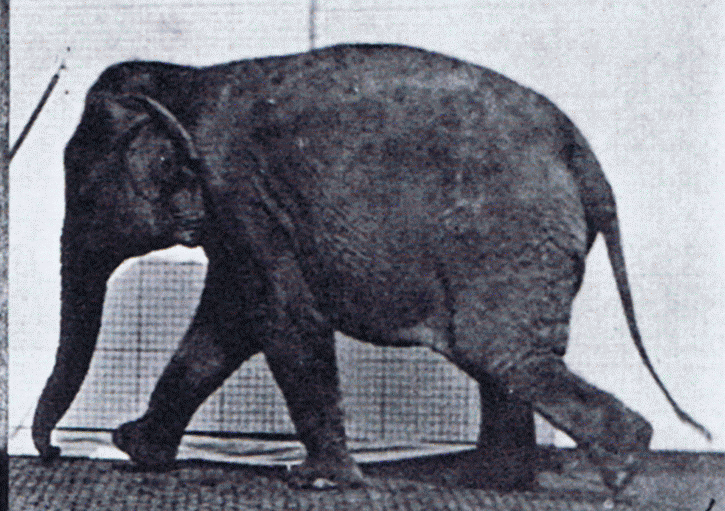|
Qarakorshaq
Qarakorshaq (Old Turkic: 𐰚𐰀𐰺𐰀𐰚𐰗𐰺𐱁𐰀𐰚) is an animal-like mythical creature in Turkic mythology.KALAFAT, Yaşar (1999), Doğu Anadoluda Eski Türk İnançlarının İzleri, Ankara: Atatürk Kültür Merkezi Yayını Qarakorshaq is described as hiding in dark places, holes or abandoned houses, waiting to grab, carry away and devour its victim; but it can be scared away by light and noise. It has clumsy gait. Analysis of Qarakorshaq's attributes has led to the conclusion that it may actually derive from a folk memory of certain real animals, which have long since become regionally extinct in certain parts of Anatolia and are now known only in legend A legend is a genre of folklore that consists of a narrative featuring human actions, believed or perceived to have taken place in human history. Narratives in this genre may demonstrate human values, and possess certain qualities that give the .... Sources * Türklerde Tabiat Üstü Varlıklar ve Bunlarla ... [...More Info...] [...Related Items...] OR: [Wikipedia] [Google] [Baidu] |
Turkic Mythology
Turkic mythology refers to myths and legends told by the Turkic people. It features Tengrism, Tengrist and Shamanism in Central Asia, Shamanist strata of belief along with many other social and cultural constructs related to the nomadic and warrior way of life of Turkic and Mongol peoples in Ancient history, ancient times. Turkic mythology shares numerous ideas and practices with Mongol mythology. Turkic mythology has also influenced other local Asian religions, Asiatic and Eurasian Steppe, Eurasian mythologies. For example, in Tatars, Tatar mythology elements of Finnic mythologies, Finnic and Proto-Indo-European mythology, Indo-European mythologies co-exist. Beings from Tatar mythology include Äbädä, Alara (fairy), Alara, Şüräle, Şekä, Pitsen, Tulpar, and Zilant. The ancient Turks apparently practised all the then-current major religions in Inner Asia, such as Tibetan Buddhism, Nestorianism, Nestorian Christianity, Judaism, and Manichaeism, before the majority's conver ... [...More Info...] [...Related Items...] OR: [Wikipedia] [Google] [Baidu] |
Old Turkic Script
The Old Turkic script (also known variously as Göktürk script, Orkhon script, Orkhon-Yenisey script, Turkic runes) was the alphabet used by the Göktürks and other early Turkic peoples, Turkic khanates from the 8th to 10th centuries to record the Old Turkic language.Scharlipp, Wolfgang (2000). ''An Introduction to the Old Turkish Runic Inscriptions''. Verlag auf dem Ruffel, Engelschoff. . The script is named after the Orkhon Valley in Mongolia, where early 8th-century inscriptions were discovered in an 1889 expedition by Nikolai Yadrintsev. These Orkhon inscriptions were published by Vasily Radlov and deciphered by the Denmark, Danish philologist Vilhelm Thomsen in 1893. This writing system was later used within the Uyghur Khaganate. Additionally, a Yenisei River, Yenisei variant is known from 9th-century Yenisei Kyrgyz inscriptions, and it has likely cousins in the Talas River, Talas Valley of Turkestan and the Old Hungarian alphabet of the 10th century. Words were usually ... [...More Info...] [...Related Items...] OR: [Wikipedia] [Google] [Baidu] |
Gait
Gait is the pattern of Motion (physics), movement of the limb (anatomy), limbs of animals, including Gait (human), humans, during Animal locomotion, locomotion over a solid substrate. Most animals use a variety of gaits, selecting gait based on speed, terrain, the need to wikt:maneuver, maneuver, and energetic efficiency. Different animal species may use different gaits due to differences in anatomy that prevent use of certain gaits, or simply due to evolved innate preferences as a result of habitat differences. While various gaits are given specific names, the complexity of biological systems and interacting with the environment make these distinctions "fuzzy" at best. Gaits are typically classified according to footfall patterns, but recent studies often prefer definitions based on mechanics. The term typically does not refer to limb-based propulsion through fluid mediums such as water or air, but rather to propulsion across a solid substrate by generating reactive forces against ... [...More Info...] [...Related Items...] OR: [Wikipedia] [Google] [Baidu] |
Anatolia
Anatolia (), also known as Asia Minor, is a peninsula in West Asia that makes up the majority of the land area of Turkey. It is the westernmost protrusion of Asia and is geographically bounded by the Mediterranean Sea to the south, the Aegean Sea to the west, the Turkish Straits to the northwest, and the Black Sea to the north. The eastern and southeastern limits have been expanded either to the entirety of Asiatic Turkey or to an imprecise line from the Black Sea to the Gulf of Alexandretta. Topographically, the Sea of Marmara connects the Black Sea with the Aegean Sea through the Bosporus and the Dardanelles, and separates Anatolia from Thrace in Southeast Europe. During the Neolithic, Anatolia was an early centre for the development of farming after it originated in the adjacent Fertile Crescent. Beginning around 9,000 years ago, there was a major migration of Anatolian Neolithic Farmers into Neolithic Europe, Europe, with their descendants coming to dominate the continent a ... [...More Info...] [...Related Items...] OR: [Wikipedia] [Google] [Baidu] |
Legend
A legend is a genre of folklore that consists of a narrative featuring human actions, believed or perceived to have taken place in human history. Narratives in this genre may demonstrate human values, and possess certain qualities that give the tale verisimilitude (literature), verisimilitude. Legend, for its active and passive participants, may include miracles. Legends may be transformed over time to keep them fresh and vital. Many legends operate within the realm of uncertainty, never being entirely believed by the participants, but also never being resolutely doubted. Legends are sometimes distinguished from myths in that they concern human beings as the main characters and do not necessarily have supernatural origins, and sometimes in that they have some sort of historical basis whereas myths generally do not. The Brothers Grimm defined ''legend'' as "Folklore, folktale historically grounded". A by-product of the "concern with human beings" is the long list of legendary crea ... [...More Info...] [...Related Items...] OR: [Wikipedia] [Google] [Baidu] |




